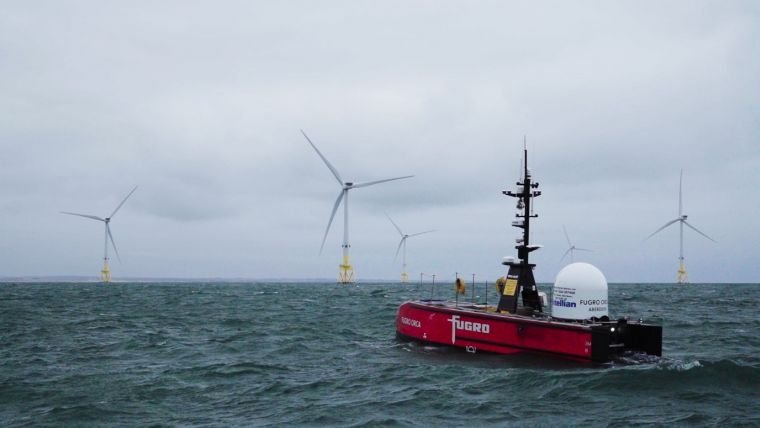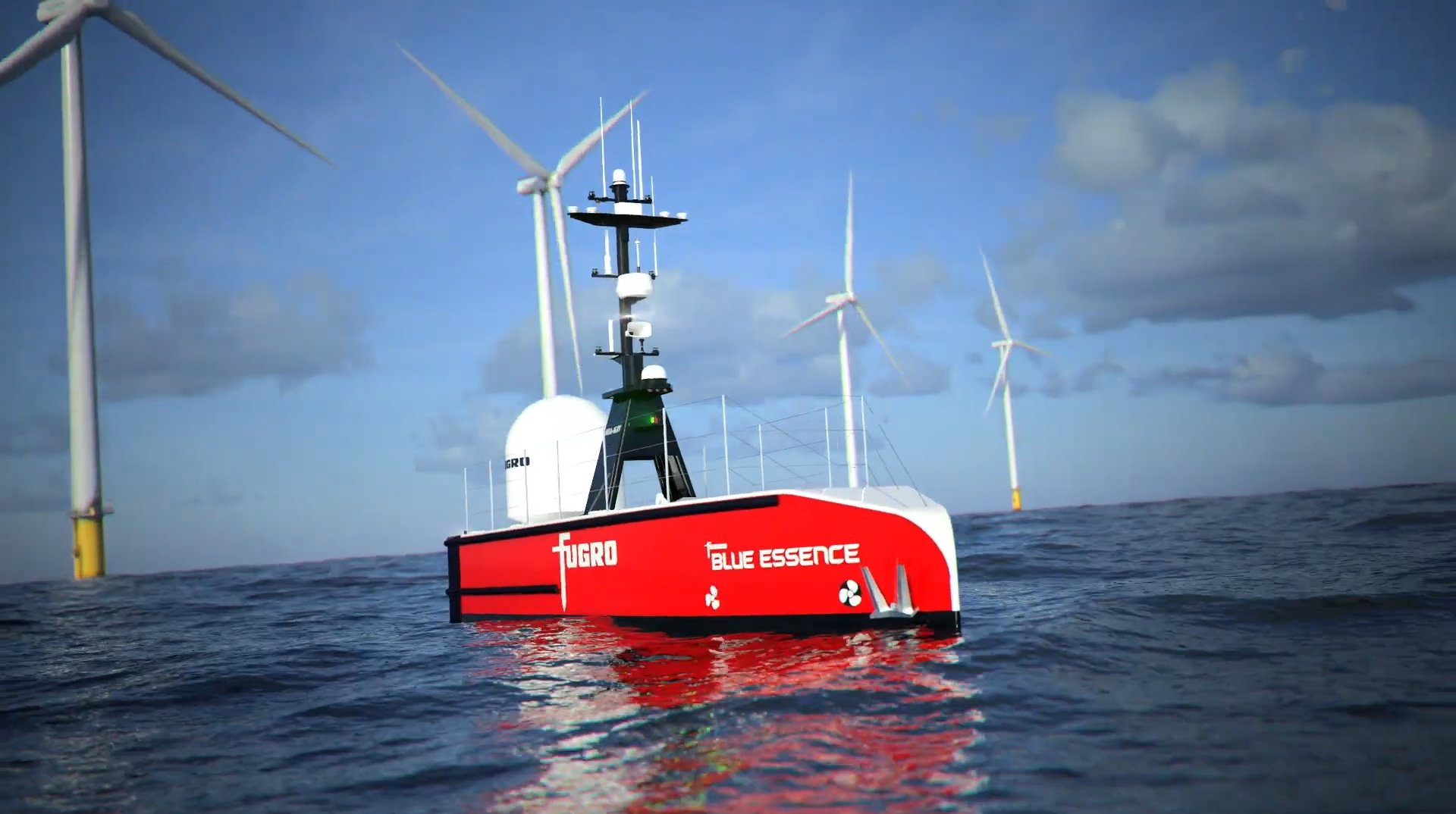Case Study: The World's First Fully Remote Offshore Wind Farm Inspection
In a significant milestone for the offshore wind energy sector, SubC customer Fugro, a global leader in geotechnical, survey, subsea, and geoscience services, successfully conducted the world's first fully remote inspection of offshore wind farm assets. The operation took place at the Aberdeen offshore wind farm in the North Sea, also known as the European Offshore Wind Deployment Centre. The project aimed to test and prove innovative technologies, promoting operational and maintenance innovation in the offshore wind energy industry.
Photo Credit: Fugro, Hydro International
The Challenge
Before reaching this remarkable milestone, Fugro encountered a considerable challenge in making remote inspections a reality. Their mission was to find a solution that enabled the remote operation of their Blue Essence® uncrewed surface vessels (USVs) paired with the Blue Volta®, an electrical remotely operated vehicle (eROV).
Key Requirements
When looking for a solution for their challenge, Fugro established specific criteria:
Low-Latency
To effectively pilot the Blue Essence® USV remotely, operators required extremely low-latency video, audio, and data transmission. It was essential to reach a threshold where human operators could control the USV remotely with the same sense of immediacy as if they were physically on-site.
Reliability
Fugro needed a solution that could maintain a stable and uninterrupted online connection. Dropouts in connectivity were not acceptable, as consistent online access was crucial for conducting inspections and assessments.
Distributed Accessibility
Given Fugro's global presence and the collaborative nature of the project, it was imperative that the solution could cater to multiple teams spread across multiple locations. These teams needed real-time access to the live-streamed data, inspections, and assessments.
Cost-Effective
Any solution adopted had to be cost-effective to make the entire concept of remote inspection viable. The technology needed to offer a cost advantage over conventional inspection methods, ensuring it was not only cutting-edge but also financially sustainable.
The Solution
Photo Credit: Fugro
SubC Imaging provided Fugro with our Real-Time Streaming and Audio Rooms technology to solve their challenge and meet the key requirements. First, SubC’s technology offered extremely low-latency video, audio, and data transmission. This met the stringent requirement for remote piloting of the USV and eROV, making operators feel as though they were physically present at the site. The technology enabled them to control the USV remotely with an unparalleled sense of immediacy.
Next, SubC's Real-Time Streaming ensured that Fugro had a reliable and consistent online connection. It virtually eliminated dropouts, allowing for uninterrupted data streaming, which was essential for the remote nature of the inspections and assessments
SubC's technology also allowed for distributed accessibility. Multiple teams in various locations were able to access and monitor the live data stream in real time. This was an important factor in the success of the collaborative project, ensuring that all stakeholders had access to critical information.
Finally, SubC's technology was a decidedly cost-effective solution, ensuring that the entire concept of remote inspections remained financially viable.
Inspection Highlights
The Blue Volta® eROV conducted detailed assessments of the wind turbines' structural integrity and safety. Additionally, comprehensive seabed mapping was performed, utilizing data acquired from a deepwater multibeam echosounder sensor affixed to the vessel's hull. Simultaneously, SubC Imaging's Real-Time Streaming and Audio Rooms technology allowed for live streaming of video, audio, and data from the operation directly to Fugro's remote operations center (ROC) in Aberdeen. This real-time data accessibility enabled staff to make well-informed, timely decisions concerning their asset maintenance program.
Photo Credit: Fugro
Industry Implications
Fully remote inspections promise to enhance safety within the offshore wind sector by reducing the necessity of deploying teams offshore for survey work. This reduction in offshore personnel exposure contributes to a safer operational environment. Plus, as offshore wind projects extend farther out to sea, the ability to conduct remote inspections and data gathering is poised to significantly reduce the carbon emissions associated with traditional offshore operations. This aligns perfectly with the industry's overarching objective of minimizing its environmental footprint and promoting sustainability.
These innovations are set to expedite and streamline offshore operations, rendering them both faster and more sustainable. The capability to operate Uncrewed Surface Vessels (USVs) from a global network of Remote Operations Centers (ROCs) is instrumental in achieving this. This approach not only bolsters operational efficiency but also contributes to the industry's commitment to sustainability. The global reach offered by this technology, enabling operations in remote or distant locations, expands the industry's impact and scope. Additionally, by shifting operations from offshore environments to onshore locations, where the crew is not directly exposed to offshore hazards, the industry is taking significant steps to enhance crew safety and well-being. In summary, these technological advancements are poised to reshape the offshore wind industry, making it safer, more environmentally friendly, and efficient, while expanding its global reach and commitment to sustainable energy solutions.
Conclusion
In conclusion, the successful execution of the world's first fully remote inspection of offshore wind farm assets by Fugro, in collaboration with SubC Imaging, marks a significant milestone in the offshore wind energy sector. This pioneering achievement, not only demonstrates the potential of innovative technologies but also carries profound implications for the entire industry. Fully remote inspections promise enhanced safety, reduced offshore personnel exposure, and a more sustainable operational environment. These innovations are set to expedite and streamline offshore operations, making them faster, more environmentally friendly, and efficient while expanding the industry's global reach and commitment to sustainable energy solutions.








